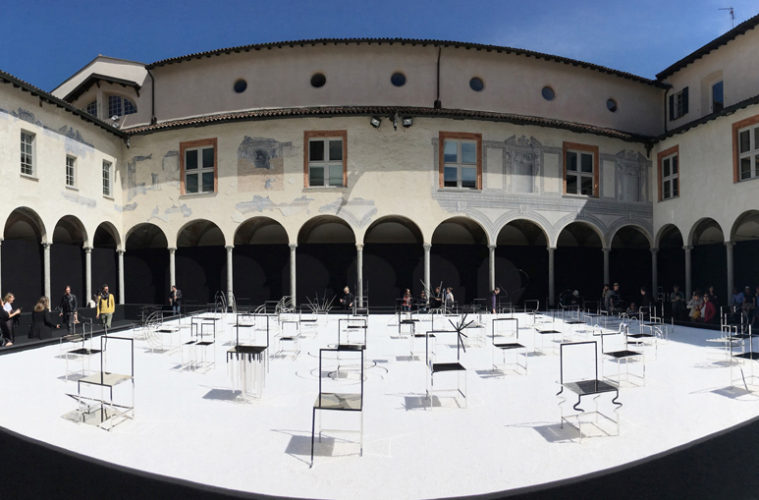Leggi questo post in Italiano
Durante l’ultimo Fuorisalone ho avuto l’opportunità di incontrare e intervistare Oki Sato, l’anima dietro lo studio giapponese Nendo.
Questo appuntamento è stato per me motivo di grande ansia e agitazione.
Nendo, Oki Sato, per me è il numero uno in assoluto. Il migliore. Il mio preferito. Non avrei mai immaginato, nemmeno nei miei sogni più rosei, di poterlo incontrare e avere con lui una splendida chiacchierata. Abbiamo riso, scherzato… è stato un incontro che mi ha molto ispirato!
Ero agitatissima e sono arrivata all’appuntamento in anticipo, così ho potuto godermi e gustarmi la bellissima installazione delle 50 Manga Chairs presso il chiostro di San Simpliciano.
Ancora una volta sono rimasta stupita e affascinata dalla magia (perché di magia si tratta!) di Oki Sato. È riuscito a far esprimere movimenti, sentimenti, stati d’animo a delle sedie. L’oggetto più stabile che ci si può immaginare, capace di esprimere, di rappresentare movimenti e sentimenti come un salto, stupore, uno “zac”, “sigh” “bam” “puff”… Concetti che per esprimerli a parole non ne basterebbe una sola lui è riuscito a esprimerli con una sedia.
Era bellissimo osservare anche lo stupore delle persone che entravano nei chiostri. Sì, perché lo spettacolo di 50 sedie che riflettevano il cielo, il sole, l’affascinante struttura del chiostro, era magnifico. E poi è arrivato lui, Oki Sato, alto, sicuro ma semplicissimo. Ha attraversato il chiostro e vi assicuro che lui emanava energia. Anche chi non sapeva chi fosse, lo guardava perché aveva un’aura magica attorno. In molti lo fermavano per chiedere di farsi una foto… d’altronde è la star del design, il mio super eroe preferito!
E così ci siamo incontrati e dopo la prima battuta, Oki Sato è davvero simpaticissimo, è andato tutto benissimo!
Potete leggere un estratto dell’intervista anche su CasaFacile.it
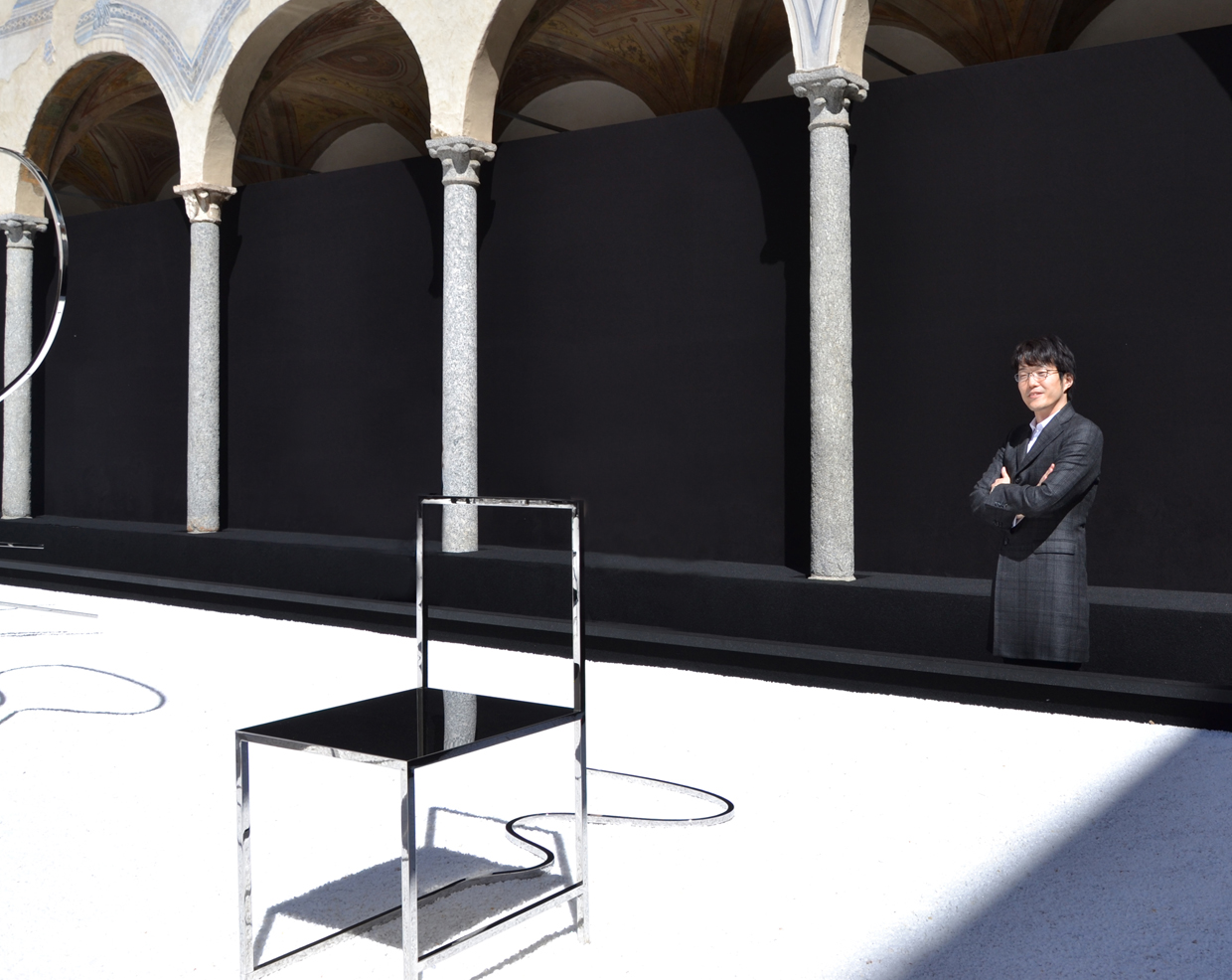
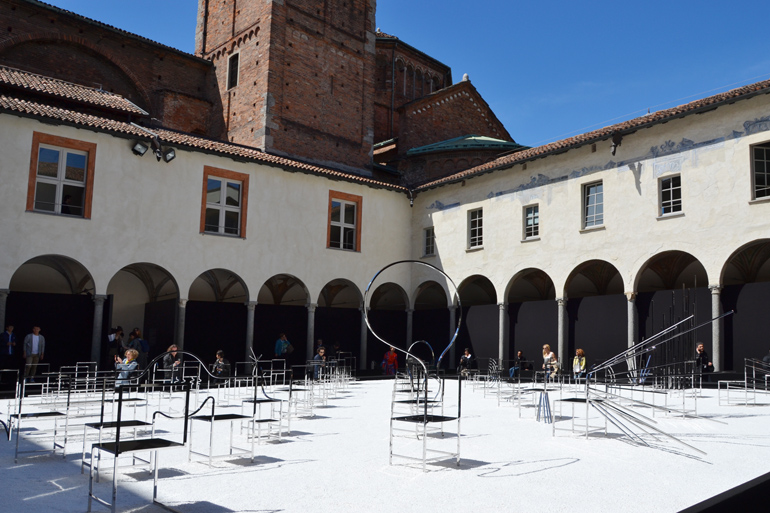
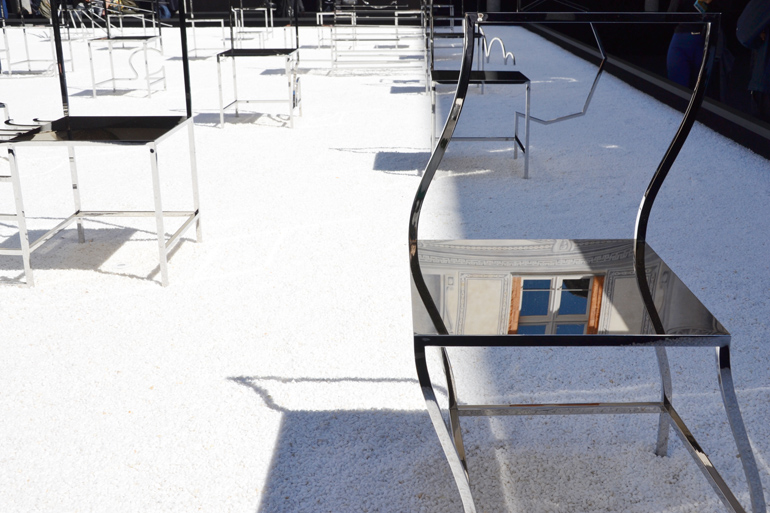
50 Manga Chairs
I manga sono un mezzo di espressione caratterizzato dall’elevato grado di astrazione, che si fonda su una serie di linee dal deciso effetto bidimensionale.
I fumetti manga sono profondamente radicati nella cultura giapponese, dal momento che se ne può far risalire l’origine alle stampe “Ukiyoe”, una forma d’arte sviluppata durante il periodo “Edo” (1603-1868 d.C.).
L’installazione 50 Manga Chairs è il risultato del tentativo di adattare il forte carattere simbolico dei fumetti giapponesi al design dell’arredo.
I manga sono composti da una serie di vignette riportate su un singolo foglio di carta per creare una sequenza narrativa. Allo stesso modo, le 50 sedie sono state allineate lungo una griglia, allo scopo di rievocare il senso di una storia.
D. Ognuna delle 50 Manga chairs racconta una storia, rappresenta un movimento, un’emozione, è stato difficile ottenere questo effetto?
R. Sì. È già difficile disegnare una sedia, disegnarne 50 è 50 volte più difficile! In questo caso è stato l’aspetto tecnico ad essere difficoltoso: le sedie sono realizzate in acciaio lucidato a specchio, la tecnica di lucidatura è stata effettuata da un artigiano in Giappone (n.d.r. dove la Apple ha fatto lucidare i suoi primi iPod!). Lucidare 50 sedie ha comportato un enorme lavoro per più di 4 mesi.
D. Ti sei divertito a disegnare queste sedie?
R. Assolutamente! Penso che questo sia molto importante: se lavorando sei troppo serio e rigido, le persone che vedranno l’oggetto lo percepiranno e si sentiranno nella stessa maniera. Il tuo atteggiamento si riflette in ciò che crei.
D. Questo tuo atteggiamento si percepisce appieno nel tuo lavoro: il tuo design riesce a stupire e a far sorridere, mantenendo però l’essenza minimale tipica giapponese. Come riesci a farlo? È una sorta di super potere?
R. No, non ho nessun super potere, penso però che il design giapponese quando diventa troppo minimal e semplice diventa freddo, io voglio invece che il mio design sia friendly, voglio che si instauri una connessione tra l’oggetto e le persone che lo guardano. Un pizzico di ironia è come aggiungere un po’ di spezie al cibo: dà quel sapore in più, aggiunge una nota magica.

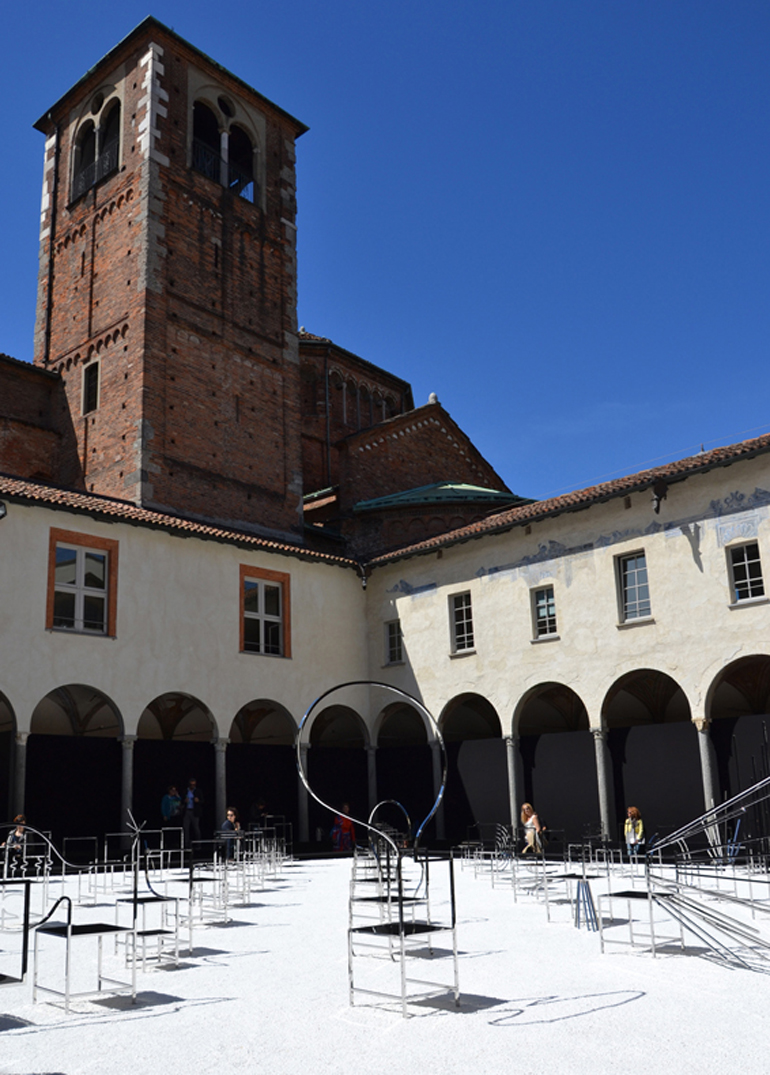
D. Io credo invece che tu abbia veramente i super poteri: ho letto che riesci seguire fino a 400 progetti in contemporanea!
R. Oh no, sono solamente un workaholic! Sono uno stacanovista: la mia vita è il design, mi alzo alla mattina e penso al design, parlo di design, mi occupo di design per tutto il giorno, fino a sera quando vado a dormire e il design è sempre il mio ultimo pensiero! Sono una persona molto noiosa in realtà… un po’ monotematico forse!
D. Cosa ti ispira?
R. Ogni cosa! Qualsiasi cosa può diventare ispirarazione, è nella vita di tutti i giorni che si trovano le cose migliori. Sono le cose semplici che danno maggiori soddisfazioni. Il pane appena sfornato per me è più un lusso e lo apprezzo ancora di più rispetto a un ricercatissimo piatto francese! 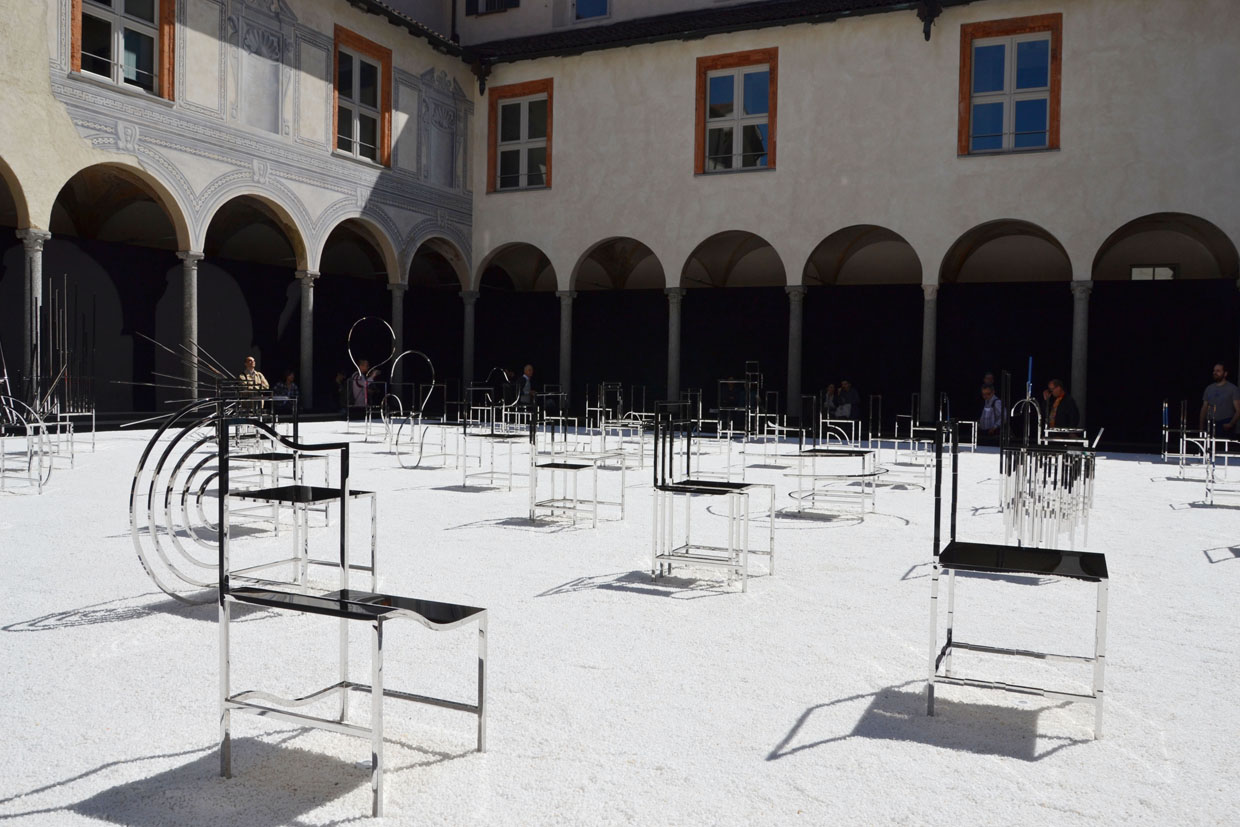
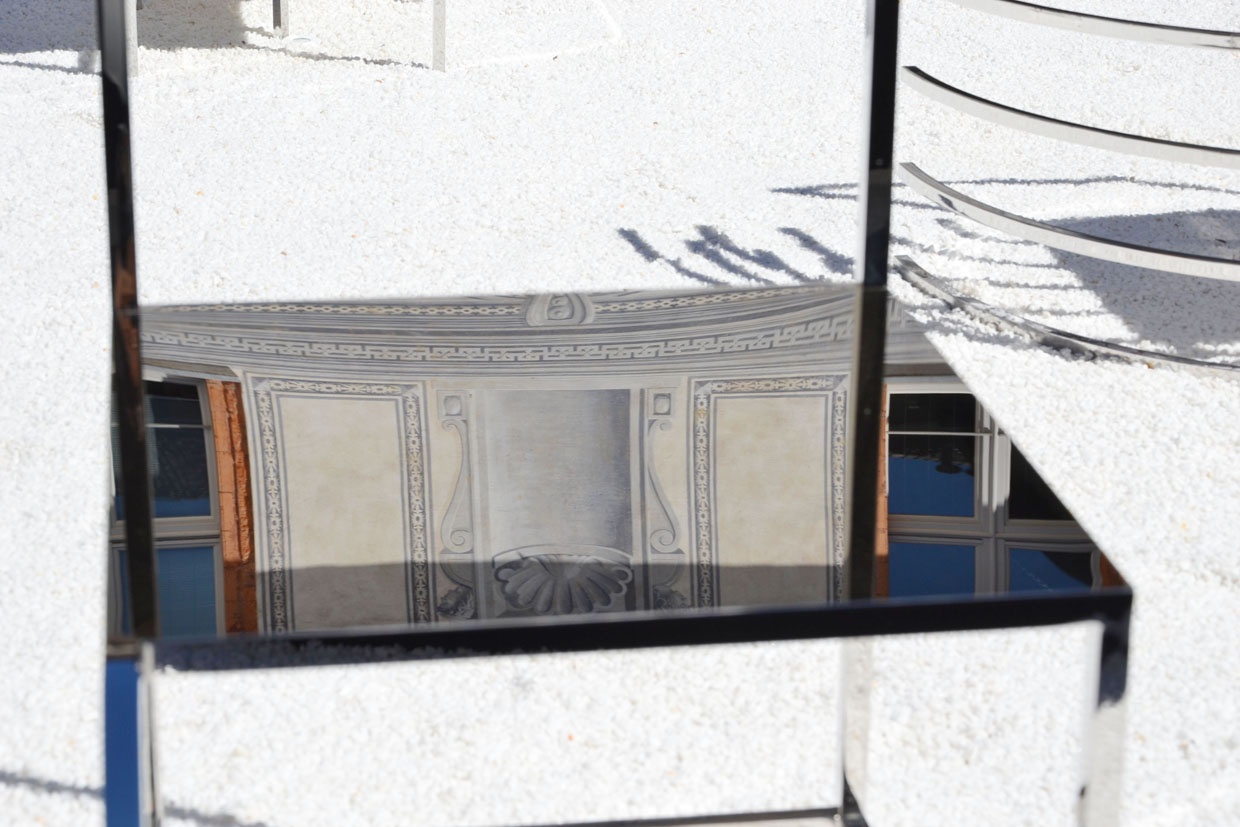
D. Hai disegnato praticamente ogni tipo di oggetto. C’è ancora qualcosa che ti piacerebbe realizzare e che non hai ancora fatto?
R. Bella domanda! Mi piacerebbe disegnare un albergo, nessuno ancora me l’ha chiesto! È uno spazio interessante, non è una casa, non è un negozio, non è un luogo propriamente privato né pubblico… è un luogo che deve essere tante cose: un bar, un ristorante, un posto dove dormire, dove incontrarsi, dove rilassarsi… Mi piacerebbe confrontarmi con un lavoro di questo tipo, potrei iniziare lavorando con lo spazio, per poi disegnare gli arredi, gli oggetti, persino i dettagli più piccoli. Sarebbe bello.
D. Quando realizzi un progetto a volte non si risolve di un oggetto unico ma in una serie. Sto pensando ad esempio alle porte che hai presentato al Fuorisalone dello scorso anno. Ti piace esplorare ogni possibilità?
R. Sì, mi piace che da un’idea possano nascere più versioni, più soluzioni. Realizzo anche singoli oggetti ma mi piace molto esplorare e vedere a cosa può portare un’idea iniziale.
D. Come ti senti a esporre il tuo lavoro in uno spazio antico e ricco di fascino come i Chiostri di San Simpliciano?
R. Erano 2 o 3 anni che ero interessato a questo luogo. Mi affascina la texture dei mattoni, l’imponenza della torre, l’atmosfera del luogo. Quando ho iniziato a lavorare al progetto delle 50 Manga Chairs avevo proprio in mente questo posto! Speravo potessero essere esposte proprio qui. Qui possono riflettere il cielo, vivere nella luce che cambia per tutto il giorno, è un luogo che anche se affollato si percepisce forte e potente. A volte capita che se c’è troppa gente non si riesce a godere pienamente dell’esposizione, invece credo che in questo caso sia ancora più bella, le sedie riflettono il movimento, le persone e rendono il tutto ancora più vivo e interessante.
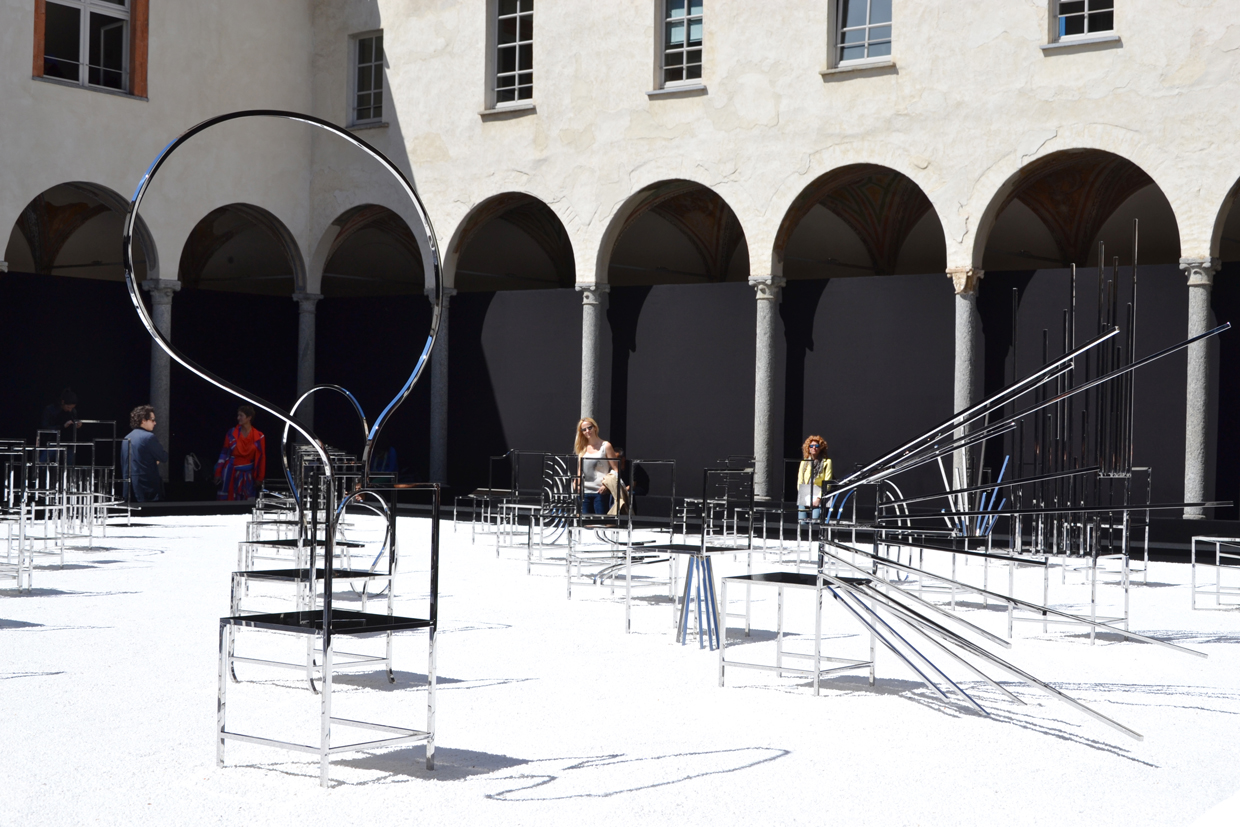
D. Sei contento di essere qui ancora una volta al Fuorisalone?
R. Sì, assolutamente sì. Questo è il posto dove mi sono presentato per la prima volta come designer. Il Salone del Mobile è un po’ come se fosse la mia seconda casa.
D. Che cos’è il design per te? Come ne vedi il futuro?
R. Per me il design è la vita, è come respirare, mangiare, dormire… il design è tutto per me. Non ho una visione del futuro, sono interessato al presente, sempre eccitato per i progetti che devo realizzare, per quello che c’è ora. Non credo abbia particolarmente senso focalizzarsi su quello che avverrà dopo. Vivo nel presente.
D. Ti piace il design italiano?
R. Assolutamente sì! Sono un architetto giapponese, mi sono formato là, ma credo in un certo modo di essere un designer italiano! Vivo in Giappone ma vengo una volta al mese in Italia e ormai credo di avere anche un po’ di Campari nel sangue!
D. Un’ultima domanda… ho letto del tuo nuovo studio a Tokyo. Com’è vivere con Kenzo Tange?
R. (Ride)… bè, lavoriamo nel nuovo studio da poco più di sei mesi ma viaggiando tantissimo non mi sono ancora ambientato del tutto. Mi sento quasi più a casa qui al Salone!
…bè, se avete intenzione di costruire un albergo… non perdete tempo!
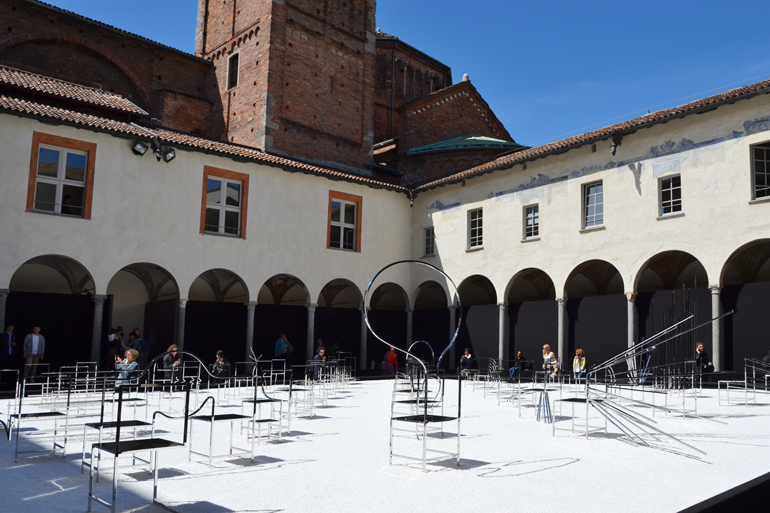

— ENGLISH VERSION —
During the last Fuorisalone I had the opportunity to meet and interview Oki Sato, the man behind the Japanese studio Nendo. This appointment was for me a source of great anxiety and agitation.
Nendo, Oki Sato, is for me the absolute number one. The best. My Favourite. I never imagined, even in my wildest dreams, to meet him and have a wonderful conversation with him. We laughed, joked … he really inspired me a lot!
I arrived at the appointment well in advance, so I could enjoy the beautiful installation of the 50 Manga Chairs at the San Simpliciano cloister.
Once again I was amazed and fascinated by the Oki Sato magic (because it is magic!). He managed to express motions, feelings, moods with chairs. The more stable object that you can imagine that can express and represent movements and feelings as a jump, wonder, a “zac”, “sigh” “bam” “poof” … Concepts that one word could be enough to express them he was able to express them with a chair.
It was great to watch the wonder of the people who entered in the cloisters. The installation of 50 chairs that reflected the sky, the sun, the fascinating structure of the cloister, was magnificent. And then he came, Oki Sato, tall, secure but simple. He crossed the cloister and I assure you that he has a total unique energy. Even those who do not know who he was looked at him because really hasaura a magical aura around. Other people stopped him asking to take a picture … he is the star of the design, my favorite super hero!
And then we met and after the first joke, Oki Sato is really very nice, everything went out great!
Q. Every Manga Chair tells a story, is it difficult make this happen?
A. Technically yes, it’s always very difficult to design one chair, design 50 chairs is 50 times more difficult! Especially the techinal side: chairs are made of steel, we had to polish every chair. We had them polished by a craftman in Japan in a place called Nigata. Nigata is the place where they polished the first iPod. Do you remember the back part of first iPods? It was finished by mirror that was brushed and polished there. We had polished chairs for more than four months. It was a lot of work for them as well. The chairs are unique pieces made for the New York gallery Friedman Benda.
Q. Did you enjoy designing the Manga Chairs?
A. Yes, totally! I think this is very important: when you are too strict and too serious the people who see your design they feel serious as well.
Q. Your design creates a connection with people, it can surprise, makes people smile all this with the typical Japanese essence. How do you do this? Is this a kind of super power?
A. No, I don’t have any super powers! Japanese design when it gets too minimal and too simple it gets cold sometimes. I want that my design be friendly. I want to create a link between the object and persons, sometimes a pinch of humour is like a spice on the food: it makes the taste better and create link between people.
Q. I think you really have super powers: I’ve read you can manage over 400 projects together, how can you do it?
A. No,no, I’m just a workaholic! I just keep thinking about design all day long! I’m a boring person! I always think about design, that’s it!
Q. What do ispire you?
A. Everything I guess! Anything can become an inspiration! It’s the everyday life the most important thing. I mean… very expensive and luxurious French food is good but having every morning a nice brioche or a good piece of bread is most luxurious to the mind!
Q. You’ve designed pretty much everything but there is something you would like to do and that you still never approach?
A. We have never done hotels! It wold be definitively interesting: it is not a house, it’s not a store, it’s not a restaurant, it’s a place where you can experience many different things. There could be several spaces: restaurant, lounge, bar, bedroom, everything you need in life. I think it really worth a design like that. I could start working with the space, furniture, objects till very tiny details! That it would be so nice!
Q. Frequently a project of yours is not just made by an object but a serie. Do you like looking for different versions and solutions?
A. Yes, good observation! I think that ideas shouldn’t be alone! I like develop my idea in a broadway, it’s always fun to explore how that idea can develop. Sometimes I design one single piece, sometimes are a serie. It’s always interesting explore ideas!
Q. How do you feel showing your work in a location like this, Chiostri di San Simpliciano?
A. Actually I was really interested in this courtyard since 2 or 3 years. I really like the texture of bricks, the tower, everything. So when I started working to this projects I was really thinking that I would love show the chairs here. It would reflect the sky, the white stones, even the visitors become part of the exhibition. Sometime when you visit an exhibition and there are too many people you cannot experience the exhibition properly, but here it is even better: more movement, more reflections, chairs become more lively! This is the reason I really enjoy this space.
Q. Are you happy to be here at Fuorisalone?
A. Yes definitively! This is the place where I started as designer, this is like my second home to me.
Q. What is design for you?
A. Design for me is life: it’s like breathing, eating, sleepling. Design is life for me.
Q. Have you got a vision for the future of design?
A. No, actually I don’t have any vision. I’m just interested in what I’m doing in this moment, I’m always super excited in all my projects that I have on my desk. It doesn’t have much sense overthink about future to me.
Q. Do you like Italian design?
A. Yes, absolutely! I was trained as architect in Japan but I feel I am an Italian design in a way! Of course I live in Japan but I visit Italy every month and I think there is a little bit of Campari in my blood now!
Q. I read about your new studio in Japan, how is living with… Kenzo Tange?
A. (Oki Sato is laughing) Well, we are working there since about 6 month or a little bit more but I travel so much, I haven’t spent much time in my studio, I think it’s gonna take more time to feel at home there. I feel more at home during the Salone!

